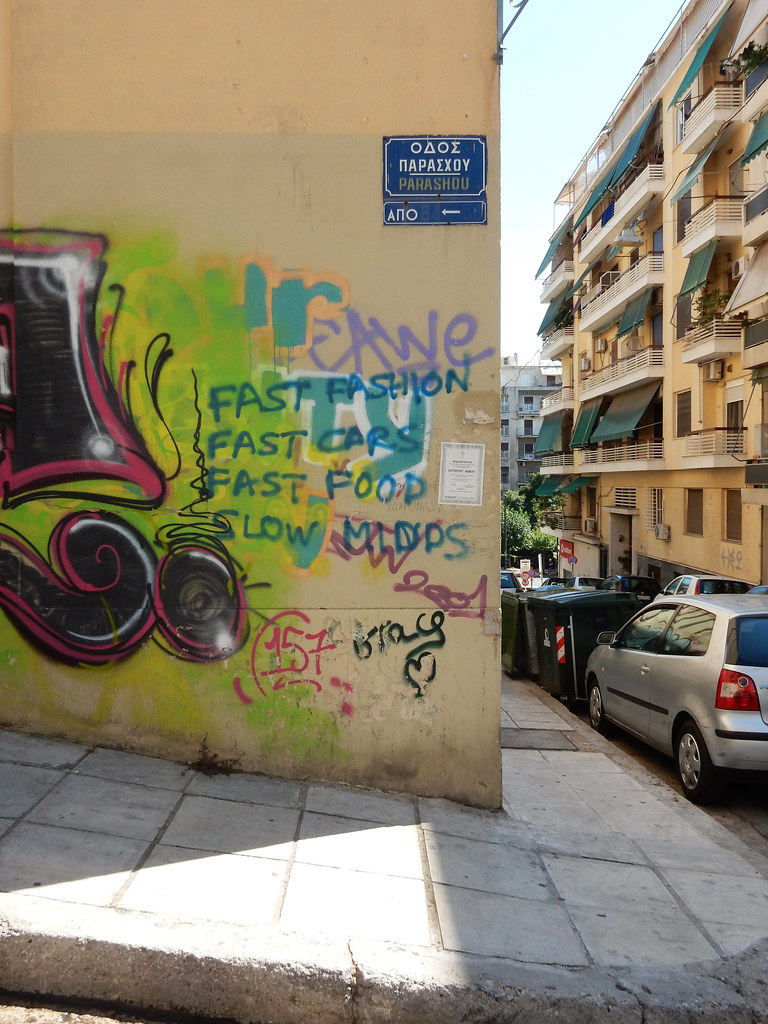What is Fast Fashion?
Fast fashion is a term that includes any apparel, shoes, and accessories that are produced in the cheapest possible way, without regard for the environment, human rights, and animal welfare. Ignorance of the system does not excuse or make the damage it does any less devastating.

Fast fashion Is To The Clothing Industry What Factory Farming Is To The Food Industry
The fashion industry is the second largest consumer of water. It requires about 700 gallons to produce one cotton shirt. It takes 2,000 gallons of water to produce a pair of jeans. Textile dyes are the world’s second-largest polluter of water, while pesticides that are used in cotton cultivation contaminate soil and leak into waterways.
This pollution tends to disproportionately effect poor communities that lack the resources to hold corporations legally responsible. It takes money and time to hire lawyers and enact legislation and regulations to prevent toxic waste accumulation to harmful levels, much less enforce cleanup when their neighborhoods are already contaminated.
Producing polyester, nylon and acrylic are materials widely used in fast fashion products. These materials require energy-intensive processes that use immense amounts of fossil fuels like petroleum. These processes release hydrogen chloride and other toxic particulates into the atmosphere. After these garments are no longer trendy, these fabrics break down into microplastics that pollute the oceans. These microplastics eventually make their way back into animals and humans.
Cheap Leather In Particular
The production of leather necessitates, of course, the environmental damage and ethical issues inherent in breeding, raising, and slaughtering animals, but also requires a tanning process that is among the most toxic of any in the fashion industry, involving the use of harmful chemicals like mineral salts, formaldehyde, coal-tar derivatives and various oils and dyes. These chemicals can destroy areas around production facilitiesm causing cancer and birth defects in surrounding areas.
So what can we do as concerned but budget-conscious consumers? It’s already difficult for many of us to find clothes that fit, now we have to watch who we buy from, who makes the clothes, and what they’re made from? Yes, but it’s not impossible; like all efforts to do better it starts with awareness and small changes.
1. Buy Quality
Higher quality products typically require the same harmful environmental processes as fast fashion, but by purchasing products that last longer you can limit your overall consumption. Yes, it may be outside your budget (I’m well aware of the Sam Vimes “Boots” Theory of Socioeconomic Unfairness) but when you are able to do it, buy quality.
Obviously, if you are in a position in life to do this, look for quality and sustainable brands at thrift stores and secondhand markets. The items themselves will likely be in better condition and will last longer and you’ll feel better about it, too.
2. Buy Sustainable
Buy products from brands, when possible, that use sustainable materials and processes in the production of their clothes. Some of these brands include:
- Nudie Jeans
- Known Supply
- Adelante Shoes
- Girlfriend Collective (Plus Size Available, up to 6xl)
- All Birds (Men’s shoe sizes up to 13 and 14 available)
- Patagonia (Plus Size available, up to waist size 44 and 3XL)
- Levi’s (Plus Size Available, up to waist size 62 and 6XL)
- Alternative Apparel (Plus Size Available, up to 5XL)
- REI (Plus Size Available, up to 5XL)
- Brothers We Stand (Plus Size Available, up to 3XL)
3. Buy Used
A secondhand/thrifted article of clothing has already been through its life-cycle and would, if not donated, be rotting in a landfill somewhere. I’ve found Pendleton, Patagonia, and Wrangler shirts, Levi’s and Lee’s jeans and chinos, and Red Wing and Alden boots and shoes at thrift stores. A discerning eye can pick out like-new apparel that may have been someone else’s buying folly but can be yours forever. And typically for a lot less money than brand new.
Don’t forget to check eBay and other auction sites for that new-to-you pair of dress shoes or denim jacket; the shipping may offset the environmental boon but your money is going to someone who will likely spend it in their community.
4. Don’t Buy At All
Take a hard stance against buying from retailers that are ready to sell you the latest, cheapest fashions at too-low-to-be-true prices. Do you need another jacket or does the one you have function just fine and still look good? Do you need another pair of the same shoes in a different color? Cut back on buying clothes that you may don’t need. For one relatively easy way to do this, try to develop a personal uniform. You’ll be doing your part in reducing consumption.
It Starts with Awareness
These are just the first few steps toward ethical fashion consumption. Other aspect to consider include:
- buying from companies who condone or promote unionization of workers
- supporting companies who do not donate to political campaigns or organizations that aim to strip rights or otherwise oppress LGBTQ+ persons, women, and people of color
- buying more clothes from LGBTQ+, POC, and women-owned businesses
As we said earlier, fast fashion is to the clothing industry what factory farming is to the food industry. If you go out of your way to avoid factory farmed meat, dairy, and eggs, it’s time to take a look in your closet. Every time you buy an article of clothing, shoes, or a new tie, you vote with your dollar for what kind of world you want to live in. When we vote en masse, we can enact the kind of change we want to see in the world.
